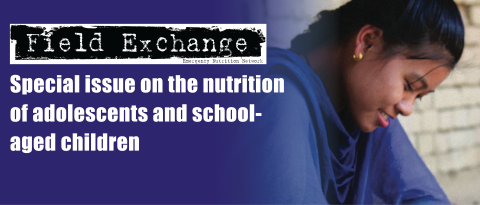The triple burden of malnutrition among adolescents in Indonesia
Rah, JH, Melse-Boonstra, A, Agustina, R, van Zutphen, KG and Kraemer, K (2021) The triple burden of malnutrition among adolescents in Indonesia. Food and Nutrition Bulletin, 42(Supplement 1). Available at: https://journals.sagepub.com/toc/fnb/42/1_suppl
By Kesso Gabrielle van Zutphen (Sight and Life and Wageningen University & Research) and Klaus Kraemer (Sight and Life & Johns Hopkins University)
In many countries, adolescents are facing a nutrition crisis. Despite significant global progress in improving adolescent nutrition, including a renewed focus on anaemia among adolescent girls, major gaps in the research and understanding of this demographic persist. In Indonesia specifically, the triple burden of malnutrition, characterised by the coexistence of undernutrition (wasting and/or stunting), micronutrient deficiencies and overweight/obesity and related noncommunicable diseases, is present among its 45 million adolescents. Approximately one in four adolescent girls in Indonesia suffers from anaemia while nearly one in seven adolescents is overweight or obese.
The recently published supplement, “The triple burden of malnutrition among adolescents in Indonesia”, in the Food and Nutrition Bulletin calls for increased attention to adolescent nutrition in Indonesia and beyond. This supplement includes an editorial and eight original research articles written by nutrition experts at Sight and Life, UNICEF, the University of Indonesia and Wageningen University and represents the first comprehensive review of current knowledge on the nutritional status of adolescents in Indonesia. The research presented includes qualitative evidence on the dietary and physical activity behaviours of adolescent girls and boys and the factors influencing these, the association between body image perceptions and nutritional status, eating habits and physical activity behaviours, the determinants of overweight and obesity among adolescents according to the Indonesia National Health Service 2013-2018 and Family Life Survey 2014-2015 data and three studies on anaemia and its association with micronutrient intake, knowledge attitudes and practices and biological and behavioural factors such as intake, absorption, infectious disease and inflammation.
The supplement’s findings show that the triple burden of malnutrition is driven by shifting diet and physical activity patterns including reduced activity in- and out-of-school and unhealthy eating habits such as frequent snacking and eating outside of the home. Adolescents’ body image perception was identified as a predictor of eating and physical activity patterns and the number of years of maternal education was positively associated with the odds of overweight, particularly in boys and in the eldest siblings. In Indonesia, iron deficiency is likely to be responsible for a large proportion of anaemia cases although the need to acknowledge and explore other potential causes is also emphasised.
Overall, this supplement highlights the need for further research on the various determinants of the triple burden of malnutrition, evidence-based interventions that are supported by large-scale implementation research and evaluation and effective delivery platforms to reach the most vulnerable groups of adolescents and to change adolescent behaviours. Furthermore, the results emphasise the importance of positioning adolescent nutrition as central to development which will help to safeguard the nutritional wellbeing of today’s forgotten generation.
The supplement was launched during an online media briefing1 hosted by key partners in July 2021. The launch emphasised a clear message that “breaking the cycle of malnutrition starts with adolescents”. The hope is that this collection of nine articles will spur the urgent need for interventions, implementation research and relevant programmes to improve the nutritional wellbeing of adolescents in Indonesia and beyond.
1Available at: https://www.youtube.com/watch?v=Vi0zI-i_mDQ


